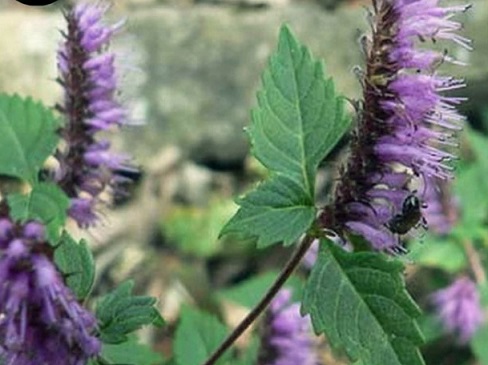Nikhil Prasad Fact checked by:Thailand Medical News Team Dec 15, 2024 3 months, 4 weeks, 1 day, 7 hours, 10 minutes ago
Medical News: As the world continues to combat the evolving threat of SARS-CoV-2, researchers are exploring alternative treatments to complement existing vaccines and antiviral drugs. Among the latest findings is the potential of Moslae Herba (MH), a traditional Chinese herbal medicine known for its antiviral and immune-boosting properties. Researchers from the Zhejiang Provincial Center for Disease Control and Prevention in Hangzhou, China, have investigated the aqueous extract of Moslae Herba (AEMH) for its ability to inhibit SARS-CoV-2, including the Omicron variant.
 Moslae Herba as a Potential Herbal Remedy for COVID-19
Moslae Herba as a Potential Herbal Remedy for COVID-19
This
Medical News report delves into the findings of the study, shedding light on the components of AEMH, their antiviral mechanisms, and the broader implications of these results.
The Significance of Moslae Herba
Moslae Herba, derived from the aboveground parts of Mosla chinensis, has been used in traditional Chinese medicine for centuries to treat respiratory infections, fevers, and digestive issues. Known for its antibacterial, antiviral, and anti-inflammatory properties, MH is often consumed as a decoction or included in multi-herb formulations. Previous studies have identified flavonoids, terpenoids, and phenolic acids as active compounds in the herb, many of which possess documented antiviral activities.
The current study focuses on the aqueous extract of MH to align with traditional preparation methods. Researchers sought to determine whether AEMH could effectively combat SARS-CoV-2 in vitro and, if so, which components and mechanisms were responsible for its effects.
Key Study Findings
-Testing Antiviral Effects
To evaluate the antiviral potential of AEMH, researchers conducted in vitro experiments using Vero-E6 cells infected with the SARS-CoV-2 Omicron strain. AEMH demonstrated significant antiviral activity by reducing viral replication and protecting cells from virus-induced death. Dose-dependent effects were observed, with an IC50 of 170 μg/mL, indicating the concentration required to inhibit 50% of the viral activity. The study also compared AEMH’s efficacy to that of Nirmatrelvir, a widely used antiviral drug, showing that while Nirmatrelvir was more potent, AEMH provided a promising alternative with potential for further development.
-Identifying Active Components
High-performance liquid chromatography-electrospray ionization-quadrupole-time of flight mass spectrometry (HPLC-ESI-Q-TOF/MS) analysis identified 26 components in AEMH, including flavonoids, phenolic acids, and organic acids. Among these, caffeic acid, rosmarinic acid, and luteolin stood out for their antiviral activities. Molecular docking simulations further confirmed that these components could form stable interactions with key SARS-CoV-2-related proteins, such as PNP (purine nucleoside phosphorylase) and TPI1 (triosephosphate isomerase 1).
Mechanisms of Action
Using network pharmacology and t
ranscriptome analysis, researchers identified nine core target genes related to SARS-CoV-2 and AEMH. Of these, PNP and TPI1 were highlighted as key regulators. The study revealed that AEMH treatment significantly altered the expression of these genes in infected cells, suggesting a dual mechanism of action: direct inhibition of viral replication and modulation of host cell responses.
Verifying Antiviral Components
In vitro testing of individual AEMH components confirmed their antiviral effects. Caffeic acid and rosmarinic acid, both phenolic compounds, demonstrated strong inhibitory effects on viral replication, consistent with previous studies. Luteolin, a flavonoid found in many fruits and vegetables, also showed significant antiviral activity by targeting viral proteins and blocking entry into host cells. These findings highlight the potential for developing these compounds into targeted antiviral therapies.
Broader Implications
The discovery of AEMH’s antiviral properties underscores the importance of traditional medicine as a resource for novel drug development. Herbal medicines offer a rich repository of bioactive compounds with diverse mechanisms of action. In the context of SARS-CoV-2, where viral mutations pose ongoing challenges to vaccine efficacy, herbal-derived therapies could provide a complementary approach to managing infections.
Additionally, the study highlights the advantages of using multi-component herbal preparations. Unlike single-drug therapies, herbal extracts work through multiple pathways, potentially reducing the risk of resistance and enhancing overall efficacy. The integration of AEMH into current treatment regimens could enhance outcomes for patients, particularly in regions with limited access to advanced pharmaceuticals.
Conclusions
This study provides compelling evidence that the aqueous extract of Moslae Herba exhibits significant antiviral activity against SARS-CoV-2, including the Omicron variant. By targeting both viral replication and host cell responses, AEMH represents a promising candidate for further research and development. Key components such as caffeic acid, rosmarinic acid, and luteolin were identified as active agents, offering a basis for future antiviral drug development.
The findings also emphasize the value of traditional medicine as a complementary approach in global health. With further in vivo studies and clinical trials, AEMH could become a valuable tool in the fight against COVID-19 and other viral diseases. Ultimately, this research bridges the gap between traditional practices and modern science, paving the way for innovative treatments that draw on the best of both worlds.
The study findings were published on a preprint server and are currently being peer reviewed.
https://www.preprints.org/manuscript/202412.0906/v1
For the latest on Herbs and Phytochemicals, keep on logging to Thailand
Medical News.
Read Also:
https://www.thailandmedical.news/news/potential-of-rue-herb-in-treating-covid-19-explored-by-a-team-of-international-researchers
https://www.thailandmedical.news/news/indian-study-finds-that-berbamine-can-inhibit-the-entry-and-transmission-of-sars-cov-2
https://www.thailandmedical.news/articles/herbs-and-phytochemicals
